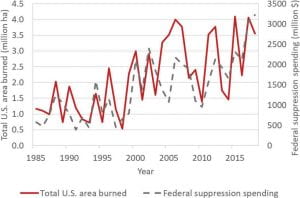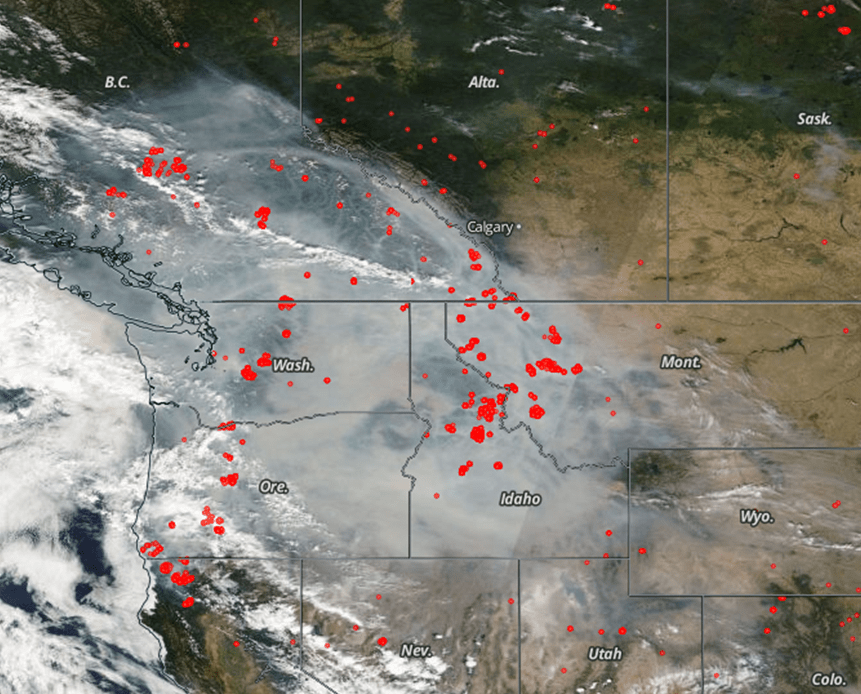Dr. Dan Jaffe is the lead author on a critical review that examines the processes that influence wildfires and prescribed fires and their effects on air quality in the U.S. This review, “Wildfire and prescribed burning impacts on air quality in the United States,” is published in the June issue of the Journal of the Air & Waste Management Association. This paper is the result of a collaboration between Dan Jaffe and Susan O’Neill, Narasimhan Larkin, Amara Holder, David Peterson, Jessica Halofsky, and Ana Rappold. These coauthors have brought their range of expertise to the issues related to wildland fires and have examined each of the processes influencing these fires and also the effects of the fires, “including the natural role of wildland fire, forest management, ignitions, emissions, transport, chemistry, and human health impacts.”
Large wildfires in the U.S. are becoming more common, and their emissions of particulate matter (PM) and gaseous compounds negatively impact air quality and human health. The air quality trend in the U.S. has been improving in the last decades. However, seasonal wildfires threaten to undermine this progress in parts of the country. The area burned by wildland fires has grown significantly in the last few decades due to “past forest management practices, climate change, and other human factors.” This has resulted in millions of people experiencing high levels of air pollution. As cities and towns have spread further into wildlands, costs for fire suppression (to protect human developments) and the consequences of fires have increased significantly.

In this review, Dr. Jaffe and his coauthors describe the current state of the research and identify key data gaps. Their goal is to identify areas that are well understood and areas that need more research. They recommend eight specific areas for future research.



